The Importance of Leave No Trace – Why it Matters When You Elope
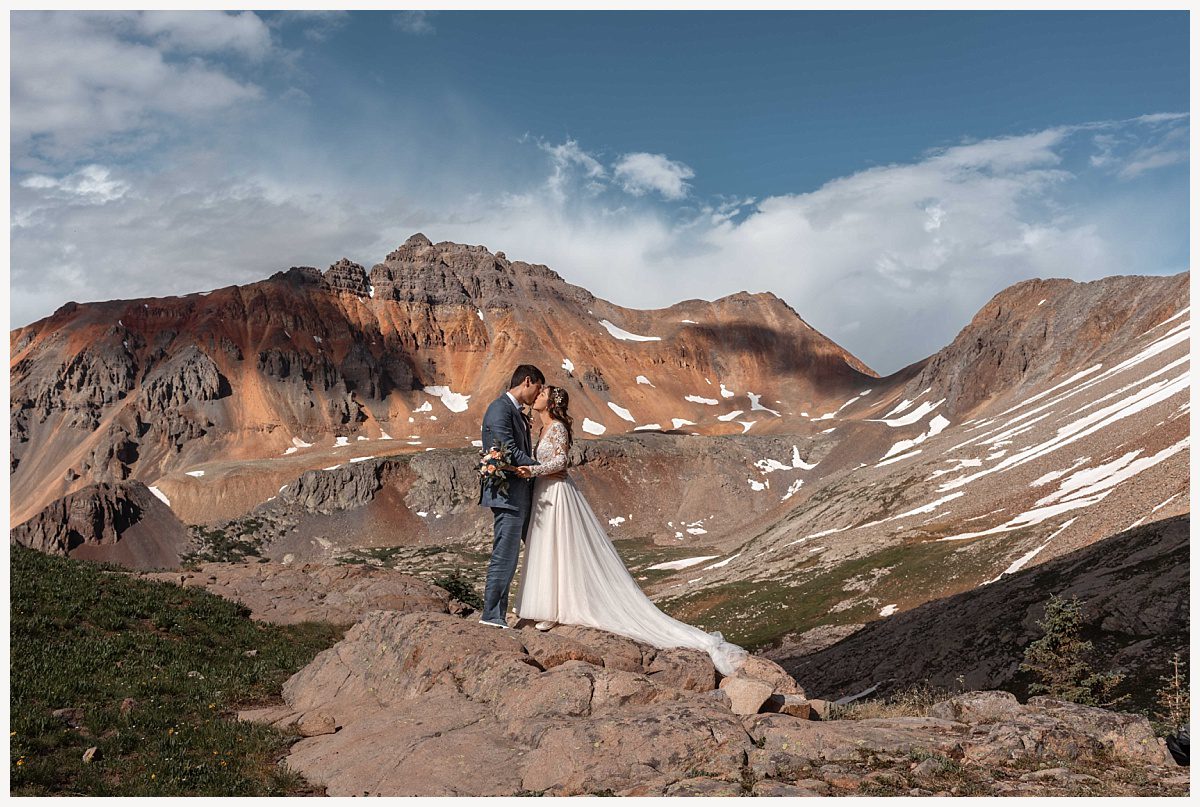
As an elopement photographer, it’s my job to educate and protect the gorgeous locations I take my couples. That’s why I created this Leave No Trace while eloping guide. It’s important to keep our natural spaces clean and protected for years to come, not only for other eloping couples but also for you. It would be a shame not to be able to visit your elopement location in 5-10 years because it was too damaged, or destroyed.
Elopements often happen outdoors, specifically on public land in a naturally beautiful environment. But, that’s not where all elopements happen, and the grandiose mountaintops and pristine beaches are not the only ‘environment’ we should be protecting. Leave No Trace guidelines help photographers and eloping couples do their duty to protect our environment – everywhere from the mountaintops to the city parks. Our environment is where we live, work, play, and get married – following Leave No Trace will ensure we can go back to these special places year after year and witness nature thriving.
Leave No Trace ethics are the guidelines for responsible recreation. They are the basic rules I abide by when going outdoors for a hike in a city park, or climbing a mountain for an adventurous elopement. If you’ve heard of Leave No Trace but aren’t sure what it has to do with elopements, keep reading. If you’ve never heard of LNT, but you want to plan a sustainable and eco-friendly wedding, this blog is full of great advice!

What is Leave No Trace (LNT)?
The concept of Leave No Trace has been around for a long time, but it’s actually more recent than you might think. For the vast majority of colonial human history, recreation and outdoor exploration weren’t at all focused on the importance of conservation. In fact, outdoorists and explorers were more concerned with taking things OUT of nature to be viewed, than leaving things IN their habitats to remain ecologically balanced. It wasn’t until 95% of old-growth forests had been cut down and an unfathomable number of species were pushed to extinction did it become a more normalized idea that humans should leave nature where nature does best. It’s unfortunate that the greatest strides in the understanding of our environment came at the expense of the plants and animals themselves, but now we know better and can do our best to protect what remains.
Leave No Trace is, simplified, the idea that we can recreate and go outdoors without disturbing the natural order of things. Essentially, “take nothing but pictures and leave nothing but footprints.” The seven guidelines detailed by the Leave No Trace Center take this vague idea of responsible recreation much farther by explaining how we affect our environment and the specific actions we should take to reduce this impact. If you follow Leave No Trace, you no longer passively move through nature hoping to do no harm, you intentionally make choices that are proven to protect, conserve, and respect Mama Earth. The more intentional each of us is to protect our environment, the more nature there will be to adventure within for the future.
The 7 Guidelines for Leave No Trace:
- Plan Ahead
- Travel & Camp on Durable Surfaces
- Dispose of Waste Properly
- Leave What You Find
- Minimize Campfire Impacts
- Respect Wildlife
- Be Considerate of Other Visitors
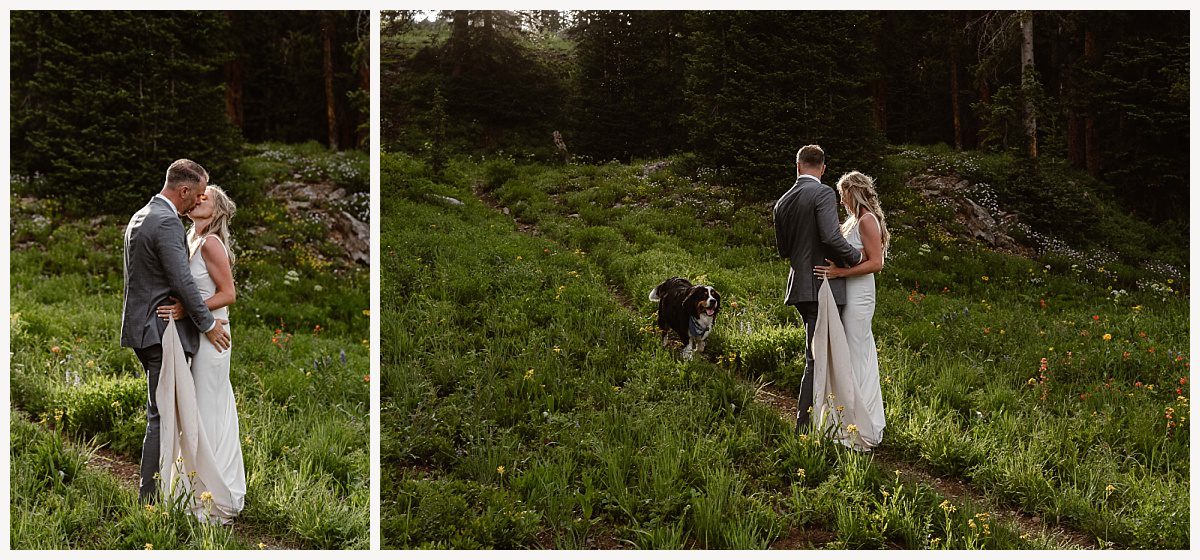
LNT Guideline #1: Plan Ahead
Preparing for your trip outdoors helps ensure the safety of everyone. This includes considering weather, terrain, regulations, boundaries, hazards, and emergencies. Planning ahead is the best way to reduce your impact because emergencies happen, and you don’t want to rely on the environment around you for resources. Plus, emergencies happen significantly less to those who prepare before they go – this will not only save environmental resources, but you won’t require the assistance of emergency personnel, who increase foot traffic on fragile trails and understandably aren’t focused on Leave No Trace during rescue efforts.
To plan ahead, you’ll need to learn the terrain. Don’t go out on trails you don’t know without a map, and check the weather before you leave but also pack gear for sudden changes in temperature and rainfall. As an elopement photographer, I do a lot of pre-event planning to scout locations, and I’ll do my best to pass along any and all beta on your location. But, I firmly believe it’s not possible to be too prepared, and I’d rather pack too much than not have enough. One of the basic guides to ensure you have the resources with you to handle emergencies is called the “10 Essentials.” If you have these 10 items with you on every hike or adventure out in nature, you’ll be significantly prepared for most surprises.
10 Essentials for Adventure:
- Navigation: map, compass, altimeter, GPS device, personal locator beacon (PLB) or satellite messenger.
- Headlamp: or reliable flashlight, plus extra batteries.
- Sun protection: sunglasses, sun-protective clothes, and sunscreen.
- First aid: plus allergy relief, foot care, and insect repellent.
- Knife & gear repair: plus rope, line, tape, and patches.
- Fire: matches, lighter, tinder and/or stove.
- Shelter: can be as simple as a reflective blanket, or as protective as a tent and/or tarp.
- Extra food: always follow the rule of expected meals plus one.
- Extra water: always bring more than you expect and/or a water purification system.
- Extra clothes: layers layers layers and bring the jacket.
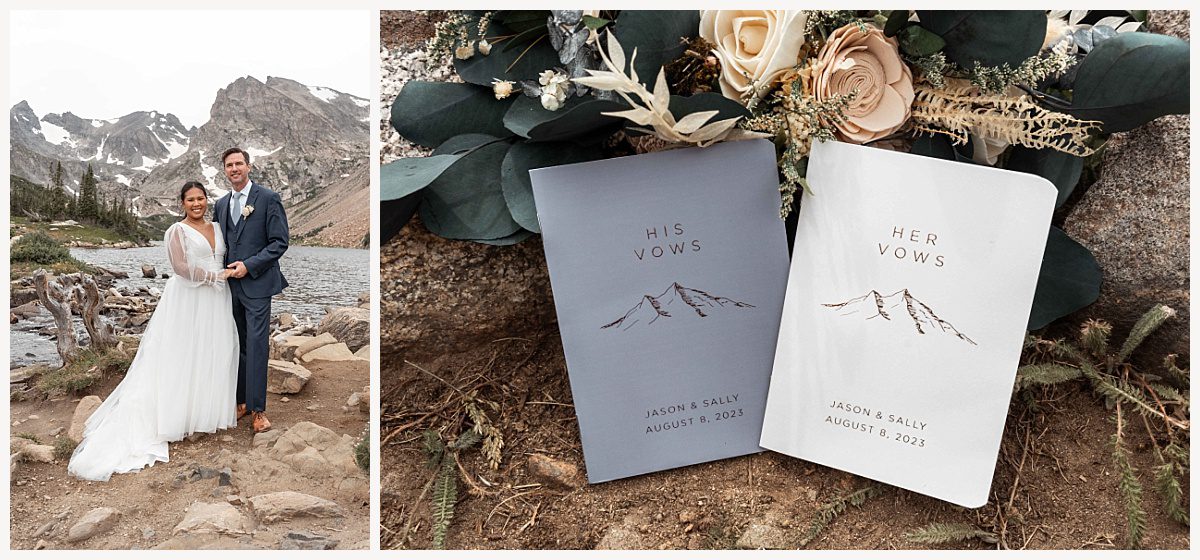
LNT Guideline #2: Travel and Camp on Durable Surfaces
Staying on trail is essential. Surface durability is different depending upon the soil type, plant life, and climate of the region. If you’ve spent time in the desert you might have heard the phrase, “don’t bust the crust!” The ‘crust’ being referred to is called the soil crust. In wetter environments, it is the nutritious top layer that gives life to grasses and small shrubs. Grass is more durable than desert soil because it protects the dirt from erosion. In the desert, you’ll see darker raised areas of soil often around plants, and sometimes with a white dried-looking top layer. That raised soil is called ‘cryptobiotic soil,’ and there are actual living microbes within it that help those patches of ground retain water in dry environments. Without crypto, there wouldn’t be enough water retention to trap nutrients that eventually allow plants to grow in these hostile environments. If there were no plants, there would not be any food, water, or shelter for the animals who live there. Crypto grows extremely slowly – a single footstep can take 10-20 years to regrow. This is why staying on trail is so important!
When you’re hiking somewhere with a less pronounced trail, or looking for somewhere to camp, avoid making new tracks – rocks, sand and gravel are all considered durable and can tolerate repeating trampling and scuffing. Ice and snow also help protect the environment by providing temporary durability. Rainy seasons break the grass rule because heavy footfalls can actually tear up roots quite easily and create long-term trenches in the soil. Dry grass is more resistant to trampling than wet meadows or other fragile vegetation. When looking for a place to camp, always remember that good campsites are found, not made.
Rules for Durable Surfaces:
- Camp at least 200 feet from any water source.
- Don’t go hiking right after heavy rain when plant roots are weakest.
- If your boots are sinking in, it’s too wet (unless you’re in a rainforest).
- Never go off-trail. If you lose the trail, walk along rocks, sand, or gravel.
- Don’t bust the crust!
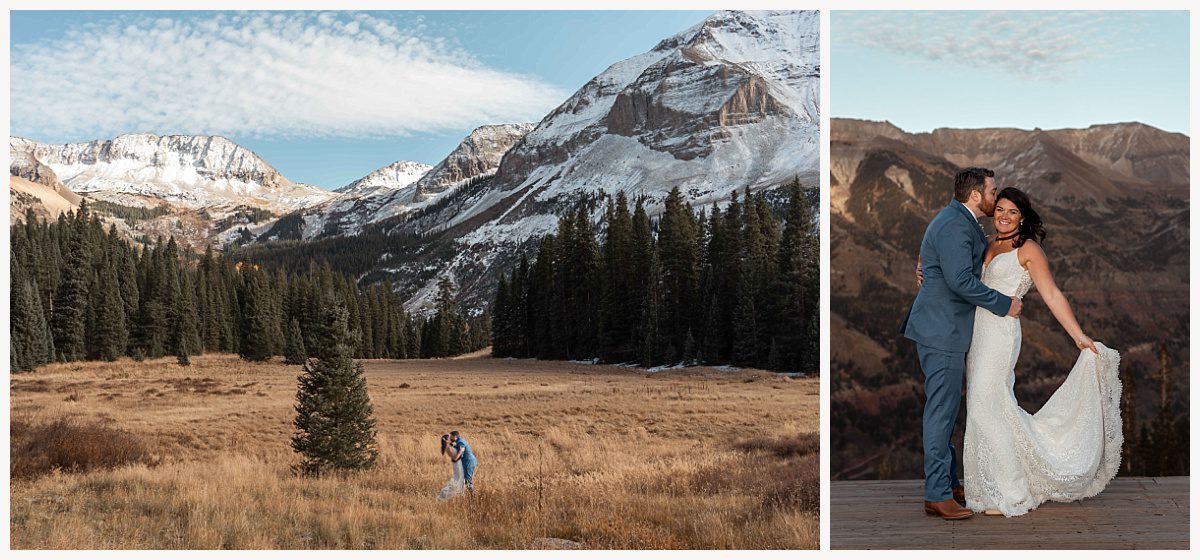
LNT Guideline #3: Dispose of Waste Properly
Properly disposing of waste helps reduce pollution of water sources and ecosystems. Pack it in, pack it out. Never leave trash or food behind that might attract critters. Make sure to bury human waste 6 to 8 inches deep, unless you’re in the desert or above the treeline. If you’re in the desert or an alpine environment, bag your poop. Yeah, I know, it’s GROSS! But, packing along a Wag Bag (basically a doggy bag for people) will make it a lot easier to pack out your waste in a responsible manner. When you do go to the bathroom outdoors, do it at least 200 feet from water, campgrounds and trails. If you’re using antibiotics or other medication, it is even more important that you don’t introduce that to the environment – filter your urine through sand and soil whenever possible to keep it from reaching the water.
If you’re thinking, “but animals pee and poop outside! Why can’t human waste be left to decompose naturally?” Well, the answer is simple: modern human diets aren’t natural. If you lived in the environment you’re camping in and all food and water you consume came from that area, you could totally leave your waste! But, human food travels across the globe and a lot is made with chemicals that aren’t naturally occurring in the environments we are traveling through. Plus, if you’re eating meat or dairy that was farmed, those animals were pumped full of antibiotics while being raised. Antibiotic contamination in nature is a serious concern and can cause long-term damage to the health of animals, plants, and waterways. All the sugary sweets, processed foods, and imported products that are part of a human diet are too complex and polluting to be introduced to precariously balanced natural ecosystems. While humanity has globalized, our environments are still much more localized. It will shock the trees and fish to have the chemicals we regularly put into our bodies introduced to the soil and streams.
Rules for Disposing of Waste:
- Stay at least 200 feet from any water source.
- Bag your poop if you’re in the desert or above the treeline.
- If you’re not in alpine or desert environments, bury human waste 6-8 inches deep.
- Always pack out food and trash waste, no matter where you are.
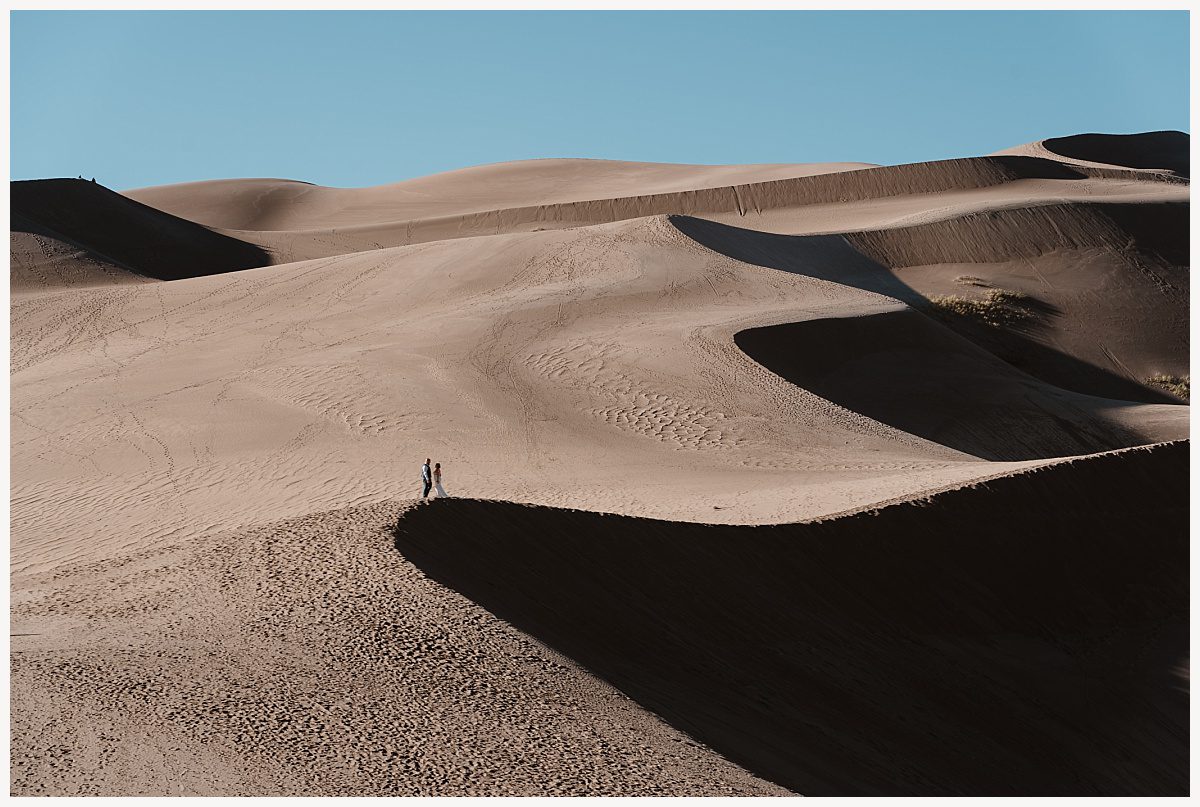
LNT Guideline #4: Leave What You Find
I’m sure you’ve heard, “take nothing but pictures, leave nothing but footprints.” This helps preserve local environments and save them from non-native species. Don’t hammer nails or carve initials into trees. Don’t pick flowers or take natural or cultural objects. For everything you remove from one environment, you’re reducing the literal footprint of that environment for the future. Rocks aren’t formed as quickly as visitors can pocket them, and places like Petrified Forest National Park stand testament to the fact it’ll take MILLIONS of years to restore what a person can walk away within a single day. Take concrete for an example: the building material is currently running a shortage because it requires massive amounts of sand, and our beaches are being reduced to meet demand. Yes, the biggest negative impacts to our natural environment have come from the pillaging of large companies. No, that doesn’t mean you can take home the shells. Big changes start at home, with us, and if we can normalize preserving our local environments then those mindset shifts will happen within our workplaces, our communities, and hopefully our governing policies. We have to care for the companies to care, never forget that.
Rules for Leave What You Find:
- Even if there are hundreds of something, don’t take one.
- If you need it, get it from a souvenir shop at the park because they ensured the memorabilia was harvested sustainably. Plus, you’ll be supporting those who protect our parks and forests.
- Don’t be afraid to speak up when you see someone else pocket something from our public lands.
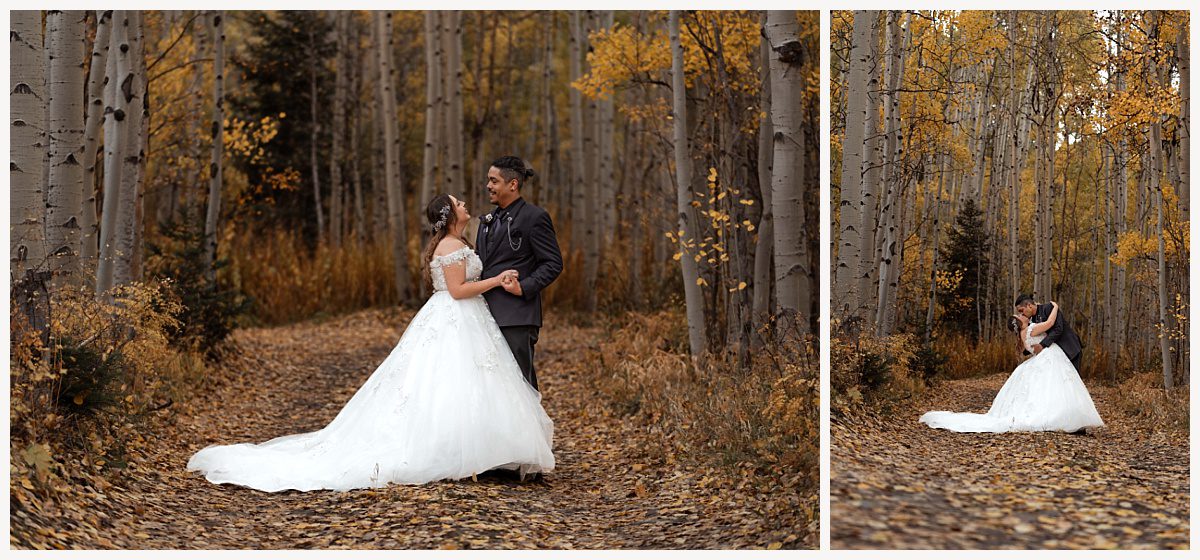
LNT Guideline #5: Minimize Campfire Impacts
The best place to build a fire is within an existing fire ring. However, sometimes you might come upon a campsite that has seen fires in unacceptable locations. Be sure to use fire pits that align with Leave No Trace guidelines to prevent any disasters or damage. Here’s what to look for: a clearing with a fire ring marked off by rocks, at least 10-15 feet from any trees, and with low brush cleared from the immediate surroundings. Fire pits should never butt up against anything – not even boulders. One of the most common misconceptions for acceptable fire pit locations is at the base of boulders. Campers think the soot stains on the rock will simply wash off with the next rain, but that isn’t true. Fire scarring on rocks takes a ton of elbow grease and scrubbing to remove if it’s even possible. Minimizing the impact of fire scarring, not just forest fires, is part of this Leave No Trace guideline.
Something I like to do when I’m camping is actually disassemble any firepits that aren’t LNT friendly, and make sure that acceptable established firepits are in good condition. I’ll pack out any trash or remove debris from the pit, straighten rocks that might be out of place, and be sure that the next camper at that site will have no question about where it’s sustainable to have a small fire. Campfires should be small, only burning as much as is necessary for warmth or cooking. You’ll also need to put the fire out completely before leaving or going to sleep – ashes should be cool to the touch. Place your hand about an inch above the burned debris, and if you can feel warmth, it’s not out. By ensuring campsites have an easily accessible and safe pit, and caring properly for any fire you start, you could possibly save an entire forest and even lives!
Rules to Minimize Campfire Impacts:
- Only start fires in established fire pits.
- Don’t use fire rings that aren’t in an open, cleared-out area.
- Maintain the fire ring by cleaning up any trash or debris.
- The safest fire is no fire – use a cooking stove instead if you have it.
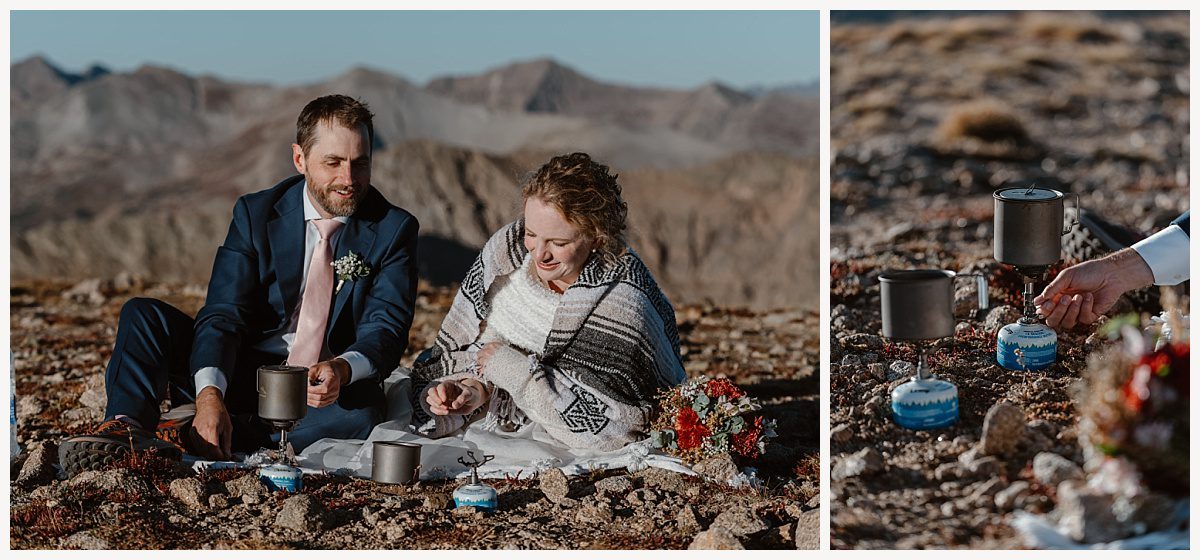
LNT Guideline #6: Respect Wildlife
Animals don’t like us encroaching on their wilderness, but the fact is there aren’t really any places left where people have not gone. So, naturally, we’re going to have interactions with wildlife if we spend any amount of time outdoors. The most important thing you can do to respect wildlife is to leave them be – give animals the space to be animals, and don’t ever do things that will increase their dependency on people. Don’t leave waste out where wildlife can get into it and develop a taste for human food. Don’t approach or scare animals – give them enough distance that they don’t get spooked. Wildlife can’t just go to the grocery when they get hungry. Every time you scare one into running away, you’ve caused it to unnecessarily expend energy, which means they need to eat more sooner. Causing animals to stress or panic can have an immensely negative impact on their environment as stress changes their eating and reproductive behaviors.
As much as public lands exist as spaces for us to recreate and enjoy the outdoors, they are also the only places left where animals can truly roam free. They do not exist for us to observe (though obviously, we enjoy watching them), and it’s essential to keep in mind when viewing wildlife in nature that they don’t need us as much as we need them. Leaving No Trace means reducing the negative impact that humans have been having on wildlife for centuries. We can’t fix the damage that has been done, but we can prevent more from happening. Love them from a distance – that’s the best way to respect wildlife.
Rules to Respect Wildlife:
- Observe wildlife from a distance.
- Never approach or touch animals.
- Never feed animals.
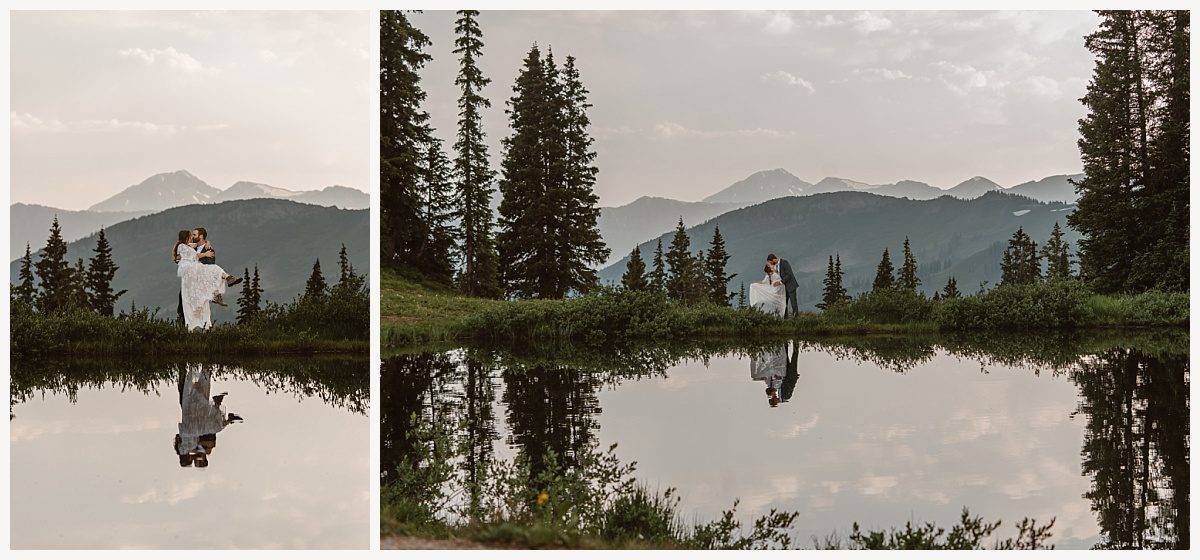
LNT Guideline #7: Be Considerate of Other Visitors
Don’t be a dick. Seriously, I mean it. Public lands are called ‘public’ for a reason – they are for all of us to enjoy. This is the Leave No Trace guideline most directly applied to elopements because we often encounter other hikers on the trails or at the viewpoints. Even in places where we have obtained permits for the ceremony, we’ve agreed to not impede on the ability of other outdoorists from enjoying their time in nature. When you elope in a national park, you’ll specifically check a box saying you won’t block off any part of the park from other visitors being able to enjoy the views or hike the trails. I know how much your wedding feels like it’s just your day, but if you’re on public lands – other people can be there too. The best way to avoid crowds is to plan your elopement on a weekday or very early in the morning. If you’re really concerned about privacy, we’ll choose a location that isn’t extremely popular.
Being considerate of other visitors doesn’t just include the people you run into – it means those who will come after you as well. To be considerate of future visitors, you’ll want to abide by all the other Leave No Trace rules so that the location where you’ve eloped is left in pristine shape. You don’t want someone hiking through a day later and thinking, “a wedding party must have come through here.” Don’t leave trash, protect the plant life, and leave natural elements where they rest. You’ll have plenty of images to remind you of the day, and I hope that when you return to visit years in the future that the landscape will look just like it did in your photos – maybe with a few taller trees.
Rules for Respecting Other Visitors:
- Pick up after yourself.
- Don’t block views or trails from being enjoyed.
- Plan your elopement during the week or early in the morning to avoid crowds.

Leave No Trace & Elopements
Now that you’re fully educated on the intention and practical use of each Leave No Trace rule, you’re ready to elope outdoors in a gorgeous location! I firmly believe it is important that we each respect and protect Mama Earth – otherwise, these places we love so much won’t be so pristine in the future. Leave No Trace ethics exist to curb the effect of increased foot traffic in the few natural spaces left on this planet – they are extremely important and a cornerstone value for how I run my business. When you work with me, you can be sure that the utmost care is given to protect every landscape I work in. I want my couples to be able to come back to the spot they said “I do” and find it as beautiful as they remember for years to come.
So, are you ready to plan an eco-friendly wedding that abides by Leave No Trace ethics?
Reach out! I’d love to help you plan the wedding celebration of your dreams in a way dutifully respectful of our environment.
This is such a helpful guide for eco-conscious couples like us! Thank you for reminding us that leaving no trace is just as important as the elopement itself.
I’m so glad this resonated with you! It’s amazing that you’re prioritizing leaving no trace—it truly makes the day even more special. Thank you for being so mindful!
I had no idea where to start when it came to minimizing our impact. Your tips on leaving no trace while eloping are a game changer for our planning!
I love hearing that these tips are helping guide your elopement planning! It’s so rewarding to know you’re thinking about the environment while crafting your dream day.
This guide is pure gold! We care deeply about nature, and your leave-no-trace tips are exactly what we needed to plan our elopement responsibly.
Thank you so much! I love that you care so deeply about nature—it makes your day that much more meaningful. I’m glad these tips will help you plan a responsible elopement!
I appreciate how you’ve broken down practical steps for leaving no trace. It’s a great reminder to be mindful and respect the beautiful places we choose to elope.
I’m so happy you found the practical steps helpful! Being mindful of the beautiful places we get to experience makes the day even more magical.
Thank you for sharing these sustainable elopement tips! We want to leave our ceremony site just as beautiful as we found it, and this guide is full of actionable advice.
You’re so welcome! Leaving a ceremony site just as beautiful is so important, and I’m really happy this guide provided you with actionable steps to do just that.
such an important topic! We’re so glad we found this guide—it’s made us rethink some of our plans to ensure we’re being as eco-friendly during our elopement day as possible.
I’m thrilled that this guide sparked new ideas for your plans! It’s awesome that you’re thinking about eco-friendly elopement decisions, and I can’t wait to see what you come up with.
This is such a helpful guide! I love the emphasis on preserving nature while still having a beautiful and meaningful elopement. My partner and I are planning a mountain elopement next year, and I was worried about making sure we didn’t disrupt the environment. Do you have any suggestions on how to incorporate leave no trace practices into the actual ceremony setup?
Thank you so much for your kind words! I’m so glad the post resonated with you and that you’re feeling inspired by the Leave No Trace approach. For your ceremony setup, I’d suggest going as minimalist as possible with natural elements—think simple florals or even using the landscape itself as your “decor.” Make sure that the flowers are native to the area. You can also use wooden flowers as well! Can’t wait to see how it all comes together for you!